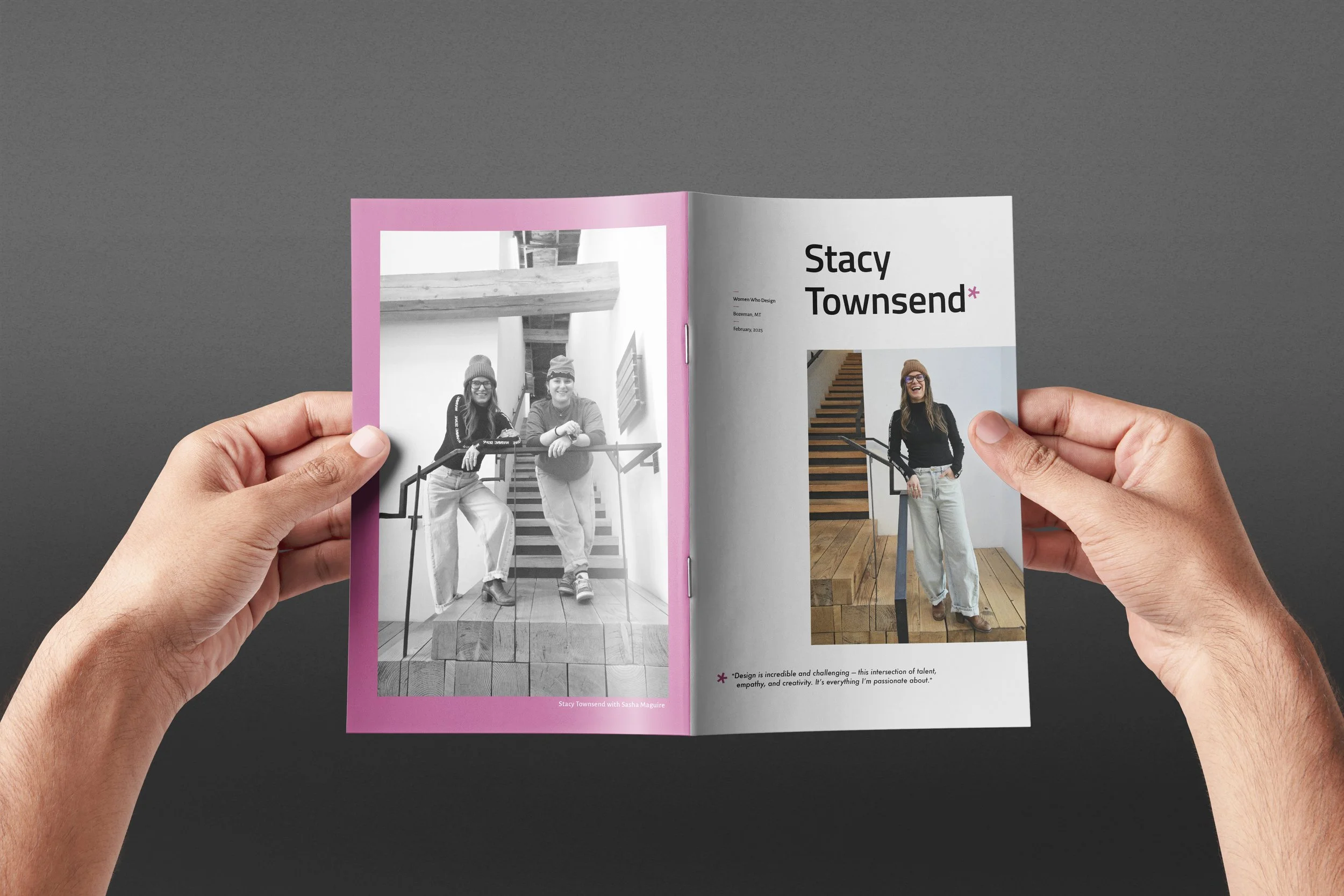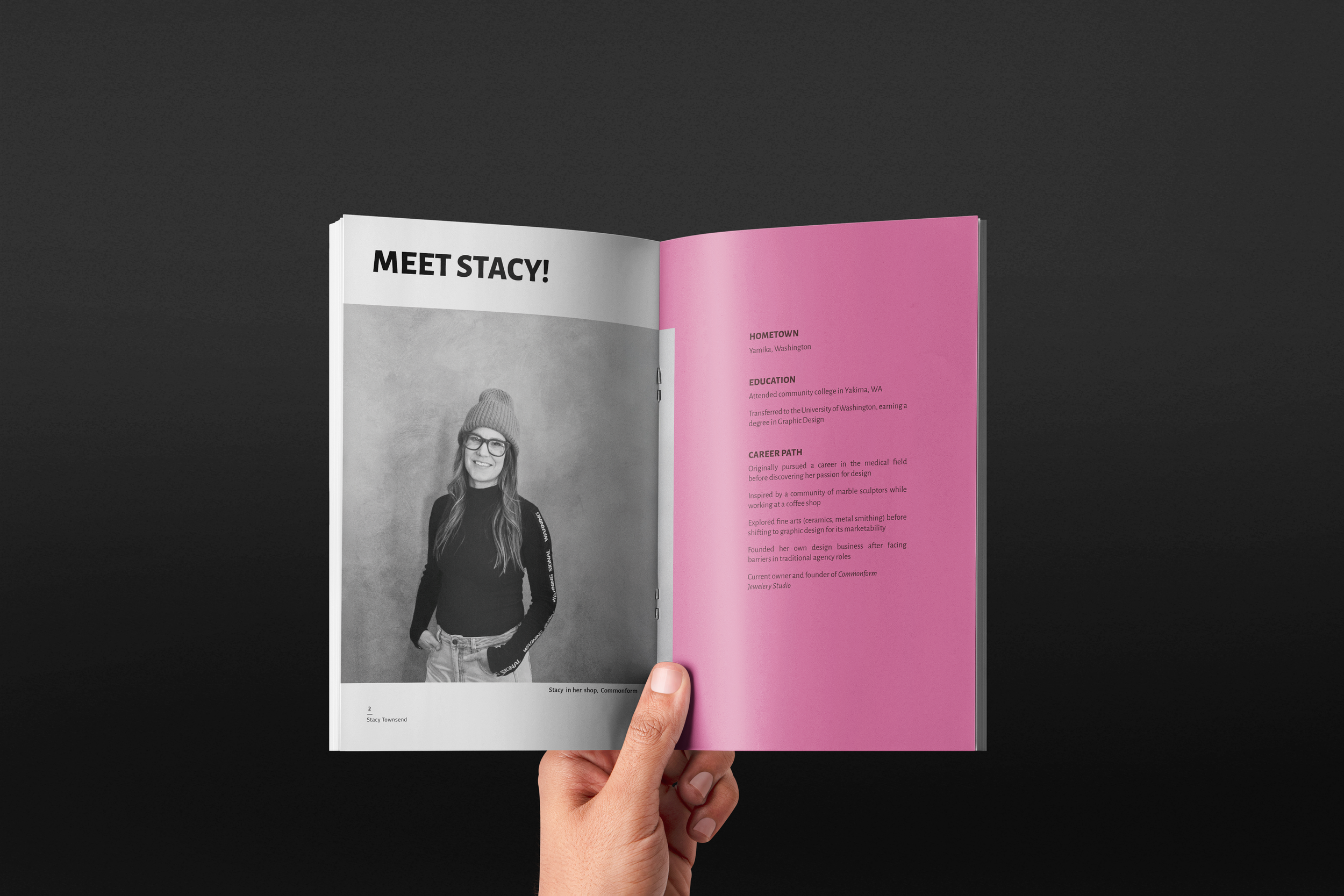STacy
TOWNSEND
“Design is incredible and challenging — this intersection of talent, empathy, and creativity. It’s everything I’m passionate about.”
“I think that actually being a woman is an advantage in this field, at least in the freelance space. I get to pick my clients, and that makes it feel really different.”
FAQs
-
When you think about career paths, they often seem linear—four years of college, an internship, then a job. But for Stacy, a graphic designer in Bozeman, Montana, her journey was anything but conventional. As a nontraditional student, she meandered through various fields before finding her true passion in design.“I originally thought I’d go into the medical field,” she recalls. “I even pursued a dental career at one point because it seemed stable, but I wasn’t passionate about it.”
Stacy’s moment of clarity came unexpectedly while working at a coffee shop near a shared artist studio in Seattle. The studio was filled with independent marble sculptors who would come in daily, covered in fine white dust. One day, curiosity got the best of her, and she struck up a conversation.“They invited me over to their space, and I was just in awe. I remember thinking, ‘Wow, you really can do anything.’ These artists had built careers around their passion, and that was a turning point for me.”
Determined to pursue something creative yet marketable, Stacy transferred schools and majored in graphic design. Though it took her eight years to complete her degree, she now sees the value in taking her time. “Your journey in school doesn’t have to be four years,” she says. “Every step led me to where I am now.”
-
As a female designer in Bozeman, Stacy has observed the challenges of working in a traditionally male-dominated field. “The patriarchy is alive and well in many industries,” she says. She felt that more acutely when working corporate jobs. “There was always a ceiling.” Despite facing rejection from design firms for being “unqualified,” she launched her own business and quickly found success.
Owning her own business has given her more freedom to work on her own terms. “I get to choose my clients, and that gives me a level of control that I wouldn’t have otherwise.” Still, she acknowledges that earning respect in the field isn’t always easy. Stacy also noted that while there are many female designers, breaking into leadership roles remains a challenge.
-
“I guess one piece of advice I could share is just that there is a lot of different ways that can look. When I graduated, I thought that I had to work for an agency. I didn’t think that anyone would trust me unless I had some chops. Where do you get chops?
But it turns out none of my clients cared about that. They trusted me, and they cared that I listened to them. They felt safe sharing their ideas knowing they were being heard, but mostly they trusted in me to let their ideas would like come to life.
I think just trust that there’s a lot of ways to do it. And even if you’re like out and in it and feeling like it’s sticky and it’s not quite working, there’s always another way to do it.”
She also emphasized seeking out mentor ship. Finding other women in the industry and building a network of people who understand your experience makes a world of difference.






